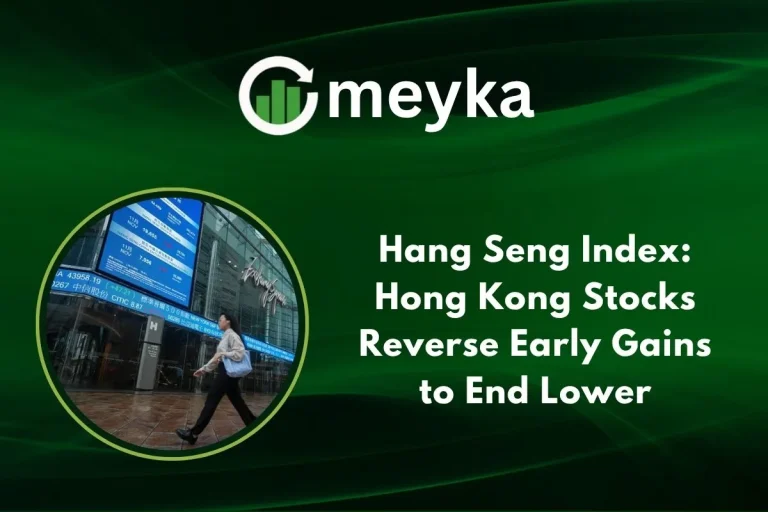Ocado’s Bold Future Plans Risk Collapsing Into Disaster
Ocado, once hailed as the pioneer of online grocery retailing, is facing mounting challenges that threaten its long-term survival. The company’s aggressive expansion strategies, heavy reliance on technology, and unsteady financials have left investors and analysts questioning whether its bold vision may ultimately collapse under its own weight.
The Rise of Ocado: A Disruptive Force in Online Grocery
Founded in the UK, Ocado quickly rose to prominence by offering a fully automated, online-first grocery service. Unlike traditional supermarkets that built e-commerce as a side business, Ocado positioned itself as a pure-play digital retailer, leveraging robotics, logistics software, and AI-driven fulfillment centers.
This bold approach gave the company an early lead, especially during the pandemic when demand for online grocery delivery surged. The company’s partnerships with established grocers such as Marks & Spencer and international deals with chains like Kroger in the United States positioned it as a global player.
Yet, as the market stabilizes post-pandemic, the risks of Ocado’s model are becoming more visible.
The Financial Struggles Behind the Innovation
For years, Ocado has been more of a technology story than a profit story. The company invests heavily in robotics, AI systems, and automated warehouses that require billions in capital expenditure. While innovation is the backbone of its brand, profitability has remained elusive.
Recent financial reports show that the company continues to post annual losses, despite rising revenues. This is alarming for investors who see competitors like Tesco and Sainsbury’s making steadier profits from hybrid models that balance physical stores with online channels.
The stock market reflects this growing concern. Ocado shares have swung wildly, making it a risky choice for those involved in stock research. While some bullish investors categorize it alongside AI stocks due to its advanced technology, the ongoing losses raise doubts about long-term sustainability.
The Technology Gamble: Strength or Weakness?
Ocado’s biggest selling point is also its biggest risk, its technology. The company’s Customer Fulfilment Centres (CFCs) are powered by fleets of robots that zip around grid-like systems to pick, pack, and ship groceries efficiently.
However, scaling this technology globally has proven more complicated than expected. Issues such as high installation costs, long deployment timelines, and operational glitches have delayed returns for Ocado and its partners.
Kroger’s rollout of Ocado-powered facilities in the US has been slower than anticipated, frustrating both customers and investors. If Ocado cannot prove that its model works consistently and profitably outside the UK, its future could be in serious jeopardy.
Competition is Catching Up
The biggest challenge to Ocado’s future lies in rising competition. Major retailers like Amazon Fresh, Tesco, and Walmart are expanding their own logistics and delivery networks, often blending online shopping with their vast physical store presence.
Unlike Ocado, these rivals have deep customer bases, strong cash flow, and the flexibility of both online and in-store operations. This hybrid approach gives them resilience that Ocado lacks. As a result, Ocado risks being squeezed out of the market unless it finds a way to scale profitably and quickly.
Investor Sentiment: From Optimism to Doubt
When Ocado signed international partnerships, investors celebrated its potential to become the “Microsoft of grocery logistics.” Today, that optimism is fading. With mounting losses, stalled projects, and no clear timeline for profitability, investor patience is wearing thin.
Stock market analysts warn that the company’s ambitious plans may collapse if it fails to generate consistent cash flow. While some still argue that Ocado is undervalued due to its unique technology, others believe it may become a cautionary tale of overexpansion in the digital age.
Global Expansion or Global Risk?
Ocado’s future depends heavily on its international contracts. Deals with Kroger in the US, Casino in France, and Coles in Australia were once seen as proof of global dominance. But delays, cost overruns, and uncertain demand have made these partnerships less reliable as revenue drivers.
If these global ventures underperform, Ocado may find itself overextended with limited ability to retreat. Unlike established retailers, Ocado cannot fall back on brick-and-mortar stores for stability.
What Lies Ahead for Ocado?
The next few years will be critical. For Ocado to survive and thrive, it must:
- Prove that its AI-driven logistics and automation can deliver consistent profits.
- Rebuild investor confidence by cutting losses and improving transparency.
- Innovate beyond grocery into other sectors, such as logistics for retail and e-commerce.
Failure to do so could see the company’s bold future unravel into disaster, leaving it as an example of how ambition without sustainable execution can bring down even the most innovative companies.
FAQs
Ocado invests heavily in robotics and automation, which increases costs. While revenues are rising, profits remain elusive because expenses outpace earnings.
Yes, some analysts categorize Ocado as an AI stock due to its advanced robotics and automation systems. However, unlike many tech firms, it struggles with consistent profitability.
Competition is intense. Unlike Amazon and Tesco, Ocado lacks physical stores, making it vulnerable. To stay competitive, it must prove its logistics model is scalable and profitable.
Disclaimer:
This content is made for learning only. It is not meant to give financial advice. Always check the facts yourself. Financial decisions need detailed research.






